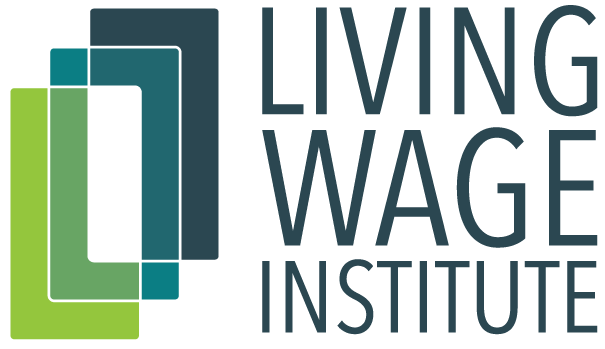



For further information, please visit the FAQs and Methodology pages or submit a question or request through the Contact page.
© 2024 Dr. Amy K. Glasmeier and the Massachusetts Institute of Technology
SIGN INJeff Bezos and Bill Gates are the two richest men in the world. What do they have in common? They both reside in the city of Seattle, Washington. Seattle boasts a handful of multi-billion dollar companies that have brought immense prosperity, job opportunity, and business to the area. In the shadow of sleek tech offices and highly paid workers in the corporate headquarters of companies like Amazon, Microsoft, and Starbucks, only minutes away but in plain sight, the city’s poor line up early every morning seeking entry to one of the city’s several food banks that have sprung up since the reign of COVID.
Since early January, citizens across the United States have engaged in frenzied grocery shopping sprees in an attempt to secure perishables such as eggs, meat, and water as states entered shelter-in-place orders. The proliferation of panic buying in combination with disruptions in supply chains due to outbreaks of COVID-19 in food processing sites [9] has made shortages of food supply especially apparent. According to the BLS, food index prices rose 1.5 percent in April, this increase following a 0.3-percent swell reported in March [10]. While the effects of the pandemic are weighing on most consumers’ wallets, a particularly hard-hitting component of food insecurity is the inability to purchase food. Those short on income are now turning to food banks as a primary source of sustenance.
Essential community services like food banks are no stranger to Seattle. In 2018 alone, 10.7% of Washingtonians struggled with food insecurity, this percentage amounting to over 800 thousand residents [1]. In the fall of 2019, 11.2% of citizens relied on food banks; with the insurgence of COVID-19 and the rise of poverty rates, a predicted 28.9% of Washington State residents will depend on food banks sometime between August and December [11]. The annual cost of food for a single adult with no children is estimated to be $3,592 [8], a sum that makes up 12.2% of the typical living costs under normal circumstances, let alone under the pressure of job loss due to the pandemic. With almost a third of Seattle residents making under $15 an hour [12], the rise in food bank usage is signaling that even workers being paid the city’s relatively high minimum wage are having to make choices about how to spend their meager salaries.
With the outbreak of COVID-19, the supplemental food supply system is now weighed down trying to support thousands more hungry citizens, many having been laid off or furloughed and facing unemployment [2]. According to the Employment Security Department of Washington State, Seattle has seen a huge uptick in unemployment since the start of the pandemic in late 2019. A preliminary estimate of the unemployment rate in Seattle was 14.4% in May 2020, compared to 2.9% only a year prior [2]. With Governor Jay Inslee’s Stay Home-Stay Healthy order that shut down or severely reduced restaurant and retail services [6], individuals working in these sectors and mostly earning minimum wages are being hit the hardest.
The effects of the pandemic do not go unnoticed by Seattle’s essential community services. Aly Bumgarner, operations assistant at the University District Food Bank (UDFB) indicated that by the end of April, she was checking in twenty new households per day, nearly twenty times more than the beginning of the month.
Bumgarner observes an increased usage by families, especially those formerly working in restaurants, largely closed in Seattle since late March [6]. Every day she hears from clients the same refrain: “I have never been to a food bank before.”
Increased need for food security services is taxing the food bank’s system of volunteer workers. Many are being advised to stay home due to the risk of infection. To bridge the gap, the National Guard is distributing food for organizations including the UDFB, Food Lifeline, and other banks [3]. Anya Atkins, the UDFB Program coordinator, offered “we have three national guardsmen that are doing volunteer work with us to support the heavier labor we have to do as we make COVID adjustments.”
Under the Coronavirus Food Assistance Program (CFAP) [4], Washington is receiving a monthly $6 million in federal support for food security efforts [5]. The support is still not enough—an average meal cost in 2018 was $3.22 per person. Pre-COVID, providing a single meal for food-insecure individuals costs upwards of 2.5 million dollars [1].
Charity and generosity are filling gaps according to Sonia, support staff for UDFB. “The pandemic has opened people’s hearts” with increased awareness of community needs. Bumgarner noticed that “a lot of [people] that were furloughed began to volunteer.” In addition, interviewed UDFB staff and volunteers report a new volunteer population comprised of college students, many of whom returned home in early March after mass university closures.
Following a phased plan of Governor Inslee, the state is starting to reopen [7]. Volunteers and staff at the UDFB continue to address food insecurity in Seattle. Looking for ways to help? Consider donating supplies, funds, or time to your local food bank.
Sources:
1. https://map.feedingamerica.org/county/2018/overall/washington
2. https://esdorchardstorage.blob.core.windows.net/esdwa/Default/ESDWAGOV/labor-market-info/Libraries/Economic-reports/MER/MER%202020/MER-2020-05.pdf
3. https://www.nationalguard.mil/News/Article/2162600/washington-national-guard-assisting-food-banks-across-state/
4. https://www.usda.gov/media/press-releases/2020/04/17/usda-announces-coronavirus-food-assistance-program
5. https://komonews.com/news/coronavirus/washington-national-guard-distributing-food-to-state-food-banks
6. https://www.governor.wa.gov/sites/default/files/proclamations/20-25%20Coronovirus%20Stay%20Safe-Stay%20Healthy%20%28tmp%29%20%28002%29.pdf?utm_medium=email&utm_source=govdelivery
7. https://www.governor.wa.gov/news-media/chart-washingtons-phased-approach
8. https://livingwage-mit-edu.ezproxy.canberra.edu.au/counties/53033
9. https://www.cdc.gov/coronavirus/2019-ncov/community/organizations/meat-poultry-processing-workers-employers.html
10. https://www.usda.gov/media/blog/2020/05/28/another-look-availability-and-prices-food-amid-covid-19-pandemic
11. https://www.kiro7.com/news/local/food-banks-sound-alarm-crisis-growing-demand-washington-state/WMUTBPOUPBF35DIDIAJN7QYESM/
12. https://evans.uw.edu/sites/default/files/public/Evans_School_Min_Wage_report.pdf
Biography: Alexis Kim is a Seattle resident and rising sophomore at Wellesley College where she is studying Economics and Art History. In her free time, she plays trombone as a member of the MIT Festival Jazz Ensemble.